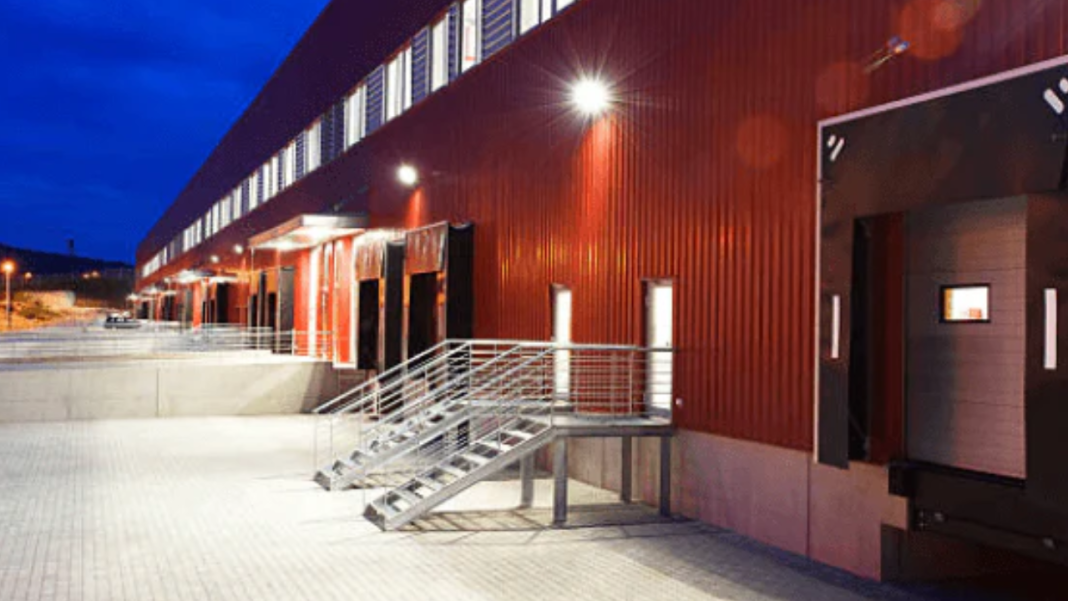LED flood lights’ exceptional efficiency revolutionizes energy conservation. LED lighting sources minimize heat production by converting a larger proportion of electrical energy into visible light, in contrast to traditional lighting sources. Their efficiency in lumens per watt (lm/W) allows them to provide greater illumination with less power consumption, which leads to significant energy savings. The standby energy usage is eliminated by the rapid illumination.
The longer lifespan of LED flood lights also minimizes the environmental impact by lowering the frequency of replacements. Their dimming capabilities allow for flexible Energy savings, and their directional lighting reduces wasted light. With its superior control and compatibility with smart systems, LED flood lights are a shining example of efficiency in outdoor lighting, providing precise energy management.
LED Flood Lights Save Energy Compared to Traditional Lighting Sources
The essential components and attributes that distinguish LED floodlights make them a shining example of energy efficiency in the lighting industry.
Efficiency of Light Production
The exceptional efficiency of LED floodlights in turning electrical energy into visible light lies at the heart of their energy-saving capabilities. LEDs are designed to produce very little heat, in contrast to conventional lighting sources like incandescent bulbs, which produce a significant amount of heat as a byproduct. This feature makes it possible to commit a larger percentage of electrical input to lighting the surrounding area, which improves energy efficiency.
Efficiency in Lumens per Watt (lm/W)
Lumens per watt (lm/W) is a measurement used to determine how effective a lighting source is. It shows how much visible light is generated for every unit of electrical power used. When compared to conventional lighting sources, LED floodlights consistently have higher lm/W values, which is evidence of their ability to produce brighter illumination with less power consumption. This efficiency is essential to obtaining significant energy savings.
Constant Lighting & Power Consumption
When turned on, LED floodlights provide instantaneous lighting. This contrasts sharply with some conventional lighting sources, including compact fluorescent lamps (CFLs), which can require a warm-up period before reaching maximum brightness. LED flood lights respond instantly, so there’s no need for extended standby times that waste energy without producing the necessary amount of light. This feature guarantees that energy is only used when necessary and adds to efficiency.
Extended Lifespan & Decreased Replacement Frequency
LED floodlights are a great way to save energy because of their long lifespan, which may be as much as 50,000 hours or more. In contrast, the lifespan of conventional lighting sources, such as incandescent bulbs, may be limited to 2,000–3,000 hours. The longer lifespan of LED floodlights minimizes the need for frequent replacements, which lowers related energy expenses and the environmental effect of producing and discarding short-lived bulbs.
Suitability for Intelligent Lighting Systems
With its advanced control possibilities, LED flood lights perfectly connect with smart lighting systems. With the help of smart systems, users can program lighting to turn on and off at predetermined times or in response to specific occupancy levels. This degree of control makes it easier to precisely monitor energy use, minimizing wasteful use and matching lights to real needs.
Minimizing Light Wastage
Focused illumination is produced where it is needed with LED floodlights since they emit light in specified directions. Conventional light bulbs, on the other hand, waste energy and produce inefficient light. Because LED floodlights are directed, they can distribute light precisely, reducing spillage and guaranteeing that the light produced is used for its intended purpose.
Efficiency of Dissipation of Heat
Conventional lighting sources emit a significant amount of heat, especially incandescent bulbs. LEDs, on the other hand, produce very little heat during the energy-to-light conversion process. Unlike older lighting technologies, which waste energy in the form of excessive heat, LED floodlights have greater heat dissipation, which adds to their longevity.
Conclusion
LED floodlights are a shining example of efficiency in the lighting industry, with a multitude of features that add up to substantial energy savings. Because of their superiority over conventional lighting sources due to their ability to transform electrical energy into visible light, improved lm/W efficiency, quick illumination, and longer lifespan. The energy efficiency of LED floodlights is anticipated to increase as technology develops, opening the door for even more sustainable lighting options.







